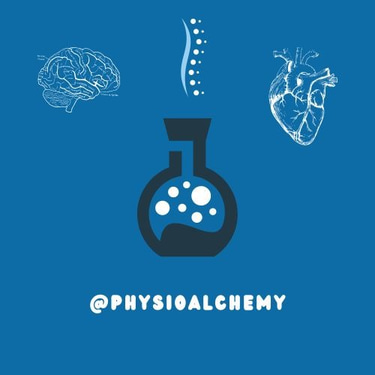Proprioceptive Training After ACL Surgery: The Missing Link in Faster & Safer Recovery
ARTICLES


When someone tears their ACL and goes through surgery, the usual rehab goals are clear: get stronger, improve range of motion, reduce swelling, and get back to sport or daily life. But there’s one piece of the puzzle that doesn’t always get enough attention proprioception.
A recent randomized controlled trial by Zheng et al. looked at how adding proprioceptive training to a standard ACL rehab program could impact recovery. And the results? Pretty compelling.
First, What Is Proprioception?
Proprioception is your body's ability to sense where it is in space. It’s how you know your knee is bent even with your eyes closed, or how you balance on one foot without tipping over. After ACL reconstruction, proprioception often takes a hit, even if strength and joint structure are restored. That’s a big deal because without that sense of control, athletes may feel hesitant, unstable, and unready to return to sport.
What the Study Did
This study involved 48 patients who had ACL reconstruction surgery. They were split into two groups:
Control Group: Followed a standard post-op rehab program.
Proprioceptive Group: Followed the same program but with added proprioceptive exercises (like balance work, backward walking, and single-leg stance drills).
Rehab ran from week 1 to week 12 post-surgery. Researchers then looked at several outcomes: knee function (using IKDC scores), psychological readiness to return to sport (using ACL-RSI), pain levels, and dynamic balance (using the Y-Balance Test).
What They Found
At 12 weeks post-op, the proprioceptive training group showed significantly better results:
Better knee function (IKDC scores: 74.8 vs 71.6)
Higher psychological readiness to return to sport (ACL-RSI: 68.2 vs 62.8)
Stronger dynamic balance (Y-Balance composite: 95.5% vs 92.3%)
Pain levels, measured by VAS, weren’t significantly different. So, while proprioception didn’t reduce pain, it clearly made a difference in control, balance, and confidence.
Why This Matters
This study backs up what many physios have already noticed in practice: strength alone doesn’t equal readiness. Patients may be physically strong but still lack trust in their knee. Proprioceptive training seems to bridge that gap, improving both function and confidence.
The earlier you build it in safely and progressively the better. In this study, adding just 15 minutes of proprioceptive work a day (like toe drawing, balance board work, and backward walking) led to measurable improvements by week 12.
The Takeaway
If you're recovering from ACL surgery or guiding someone who is don’t skip proprioception. It’s not just about building muscle. It’s about rebuilding connection, control, and confidence. Rehab should include:
Balance training (static and dynamic)
Eyes-closed or vision-reduced tasks
Directional and surface variations
Backward and lateral movement
These exercises don’t need to be fancy. They just need to be consistent, targeted, and gradually progressed. The nervous system needs training, too.
